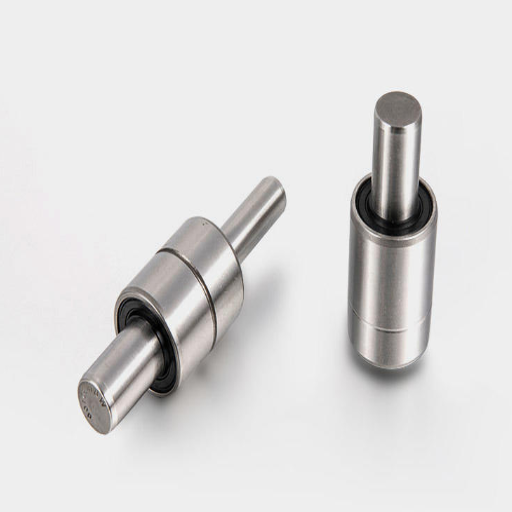Water pump bearings, particularly integral shaft bearings, play a pivotal role in ensuring the efficiency and durability of water pumps across various applications, including automotive, industrial, and agricultural systems. These components are engineered to withstand radial and axial loads, provide minimal friction, and operate under diverse and often challenging environmental conditions. Understanding the key manufacturers in this industry is crucial for making informed decisions, whether you are sourcing components for production, maintenance, or repairs. This guide offers a comprehensive overview of the top water pump-bearing manufacturers, providing insights into their strengths, technological innovations, product offerings, and industry reputation.
What are water pump bearings and why are they important?
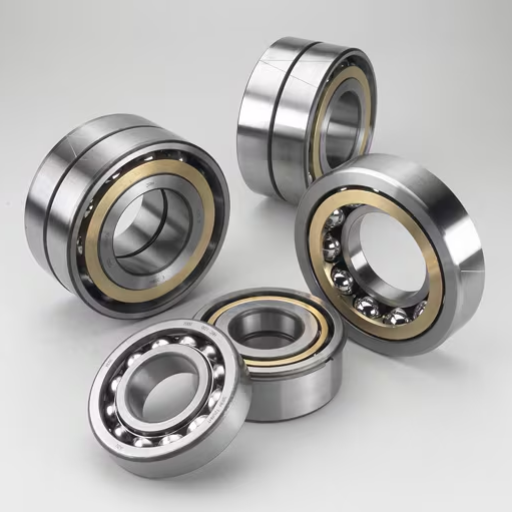
Key characteristics of quality water pump bearings
From my perspective, quality water pump bearings are defined by their durability, precision, and reliability under demanding operating conditions.
- Load capacity: Bearings must be able to withstand axial and radial loads without deforming. For water pumps, this often requires a dynamic load rating that meets or exceeds operational requirements.
- Material composition: Quality bearings utilize materials like chrome steel and stainless steel that are structural, and resistant to wear, and corrosion. Heat-treated components are critical to maintaining structural integrity.
- Sealing performance: Effective seals can block the entrance of dirt or water into the bearing, preventing contamination and ensuring long-term service. Seals also need to withstand high rotation speeds and drastic temperature changes.
- Tolerances and precision: Bearings must be manufactured to close dimensional tolerances so that they can rotate and be aligned properly. They can provide on-the-spot justification for their precision by mentioning standards such as ISO or ABEC.
- Temperature range: The working temperature range for water pump bearing is relatively wider, from -30°C to 120°C (-22°F to 248°F), depending on the application. But they should operate within those temperatures efficiently.
With the above listed characteristics, the bearings can perform optimally even under high-stress environments which translates to lower downtimes and better effectiveness of the water pump system.
How water pump bearings impact pump performance
I think that water pump bearings are vital regarding the function of a pump as well as its efficiency. Their bearings are intended to assist in decreasing friction and permit the free rotation of the shaft when it is rotating both radially and axially. Well-designed and crafted bearing reduces the components’ friction and ensures the proper transfer of torque. Effective bearings have to additionally be evaluated based on technical, such as load capacity, rotational speed, lubrication used, and material strength. For example,
- Load Capacity: Bearings are subjected to radial loads caused by the rotation of the belt’s drive and to the axial loads resulting from the hydraulic pressures.
- Rotational Speed: Typical bearings can be applied to high-speed rotation, with some applications operating at several thousand RPM.
- Lubrication: In areas with a lot of water or material particulates, effective sealing is imperative to reduce contamination, while surfaces are exposed to high movement experience. Their lubrication is required to lower the friction.
- Material Specifications: For extended lifetime and resistance to thermal stress, heat-treated steel or ceramic parts are employed.
Water pump bearings provide support to the pump assembly, reduce alignment errors, and minimize mechanical losses as well as enhance the efficiency, service life, and reliability of the pump system.
How to choose the right water pump bearing manufacturer?
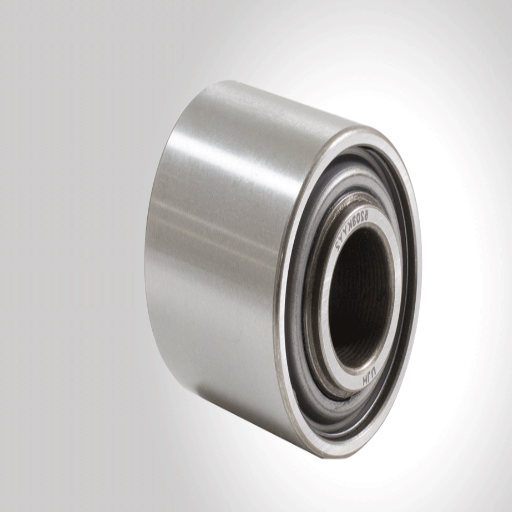
Evaluating manufacturer expertise and experience
When evaluating a water pump bearing manufacturer, I focus on their technical expertise, industry experience, and their ability to meet precise application requirements. A key aspect is their understanding of critical such as load capacity, rotational speed, lubrication mechanisms, and material specifications. For instance:
- Load Capacity: The manufacturer should elaborate on the bearings that endure radial and axial load and the requirements my system shall impose.
- Rotational Speed: I ascertain whether the manufacturer satisfies the needed levels of RPM for high-speed applications, which for some may go into the order of several thousand RPM.
- Lubrication Expertise: Providing systems with proper lubrication as one of the bearings functions is very important, especially in places with a lot of dirt or moisture. Manufacturers ought to develop excellent seals and low-friction lubrication for bearings that will operate in these conditions.
- Material Specifications: I prefer to deal with manufacturers who use heat-resistant steel or ceramics that are tough and can withstand continuous operations.
A manufacturer’s experience in the application of thorough testing procedures, international certificates, and the ability to provide tailor-made solutions reinforces trust in their competence. The bearings must be robust and efficient and meet the application’s technical specs.
Comparing bearing materials and designs
Bearings made of different materials are best evaluated for their mechanical attributes, thermal tolerance, and operational life relative to their intended use or application. Different types of steel bearings made of high-carbon chrome steel like AISI 52100 and other alloys have exceptional hardness, rating at 60-65 HRC and above. This makes them ideal for high-load applications with constant operating conditions as they also have great wear resistance. One of the drawbacks, however, is that steel bearings are prone to corrosion due to moisture so extra coatings or lubricants may be required.
Ceramic bearings are valued for their lightweight features and the higher composition of silicon nitride (Si3N4) makes them superior when it comes to heat resistance and corrosion. Ceramic bearings have a decrease in density to approximately 3.2 g/cm^3 as opposed to steel which has a density of approximately 7.8 g/cm^3. This results in less inertia and better performance in high-speed applications. Their thermal resistance also stretches to 1,200°C, which is ideal for extreme environments, making ceramic’s tolerance better than steel’s approximate 200°C before deformation is encountered. One drawback is the high manufacturing cost.
Design leniency is critical in determining how well the bearing will perform. While both radial and moderate axial loads can be accommodated by deep groove ball bearings, heavy radial loads with slight axial displacement can be achieved by cylindrical roller bearings. Loads in one direction with multiple load points enable enhanced stiffness and load-bearing capacity for angular contact bearings, thus making them ideal in applications where high precision and directional axial loads are required. The angles may vary from 15° to 25°.
Such a combination of material and design will greatly depend on the analysis of the system’s load profile, operating speed, temperature range, and environmental factors. Effective application of the bearing will ensure that performance and durability are both maximized.
Assessing quality control and testing procedures
The quality control and testing procedures of numerous bearing types used are geared towards conformity with defined technical requirements and operational reliability.
- Material Composition Analysis: Confirm that the alloy or material used has the required hardness, load-bearing, and corrosion resistance qualities relative to the application. For instance, the use of SAE 52100 steel with a hardness of 60 – 64 is accepted but is often justified due to its superior wear resistance and fatigue limits.
- Dimensional accuracy and geometric tolerance: Inspecting the bearing dimensions to ensure that they fall within defined permissible tolerances (e.g. ISO P4 or P2 for precision applications) so that no variation that would interfere with alignment and function is acceptable.
- Dynamic and static load ratings: Determining values of load capacities and verifying them against the calculated limits of ISO 281 to check whether the bearing would support the listed radially and axially loading forces.
- Vibration and noise testing: Operational imbalance or noise could be traced with advanced tools like vibration analyzers to measure and check the balance of the rotor for any operational smoothness and imbalances or irregularities that could shorten their lifespan.
- Lubrication Compatibility testing: Evaluating the lubricant for effectiveness and compatibility with the temperature range the lubricant will be used or maintained (-20°C to 120°C for standard applications).
- Fatigue Life Testing: Conducting endurance tests while alternating between loads and stresses to simulate operational conditions is performed to determine the system lifecycle for the bearings.
Focusing on these aspects during the tests and documenting them will help reduce such deviations from the standard values before they develop, and thus improve the system’s reliability and safety in operation.
What are the different types of water pump bearings available?
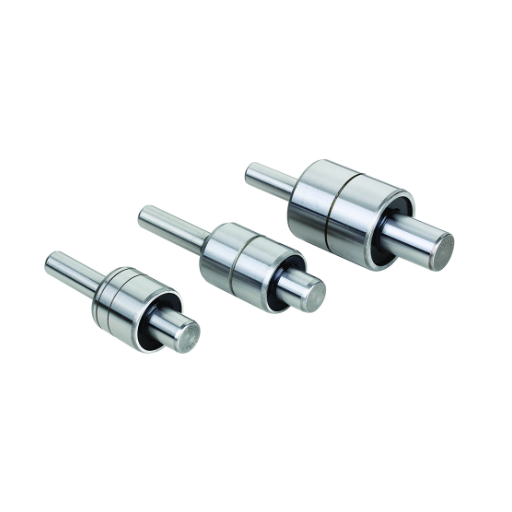
Single-row vs. double-row ball bearings
In my own opinion, the main distinction between single-row and double-row ball bearings is due to their construction outline and load-bearing capabilities. Being balls, single-row ball bearings will always have the ability to rotatively work with greater speed because of their design, as they are meant to carry radial loads. These types of bearings are perfect for use where there are no or very small axial loads.
Meanwhile, double-row ball bearings have two rows of balls which enables them to carry greater radial and axial loads at the same time. Their construction enhances the stability and distribution of the loads enabling them to be used on equipment that encounters more force. However, since they have greater internal friction than single-row bearings, their speed of rotation is limited to some extent. This limitation is compensated for by their higher strength and greater operational delivery in extreme conditions.
- Load Capacity: Double-row bearings are more durable than single-row bearings because they have approximately 1.6 times the load capacity of single-row bearings.
- Speed of Rotation: Because of decreased internal friction, single-row bearings usually operate at higher speeds.
- Axial Load Handling: Double-row bearings rate better than single-row bearings in controlling combined radial and axial loads.
- Application Suitability: Single-row bearings also offer better performance in precisely engineered machines that face dynamic high-speed conditions, while double-row bearings are more efficient in more massive industrial loads and systems that are sensitive to misalignment.
All of these mentioned types have their specific uses depending on the workload within a given scenario. The selection of the bearing type is influenced by such as the load shift, the speed needed, and the strength of the bearing.
Roller bearings for high-load applications
Roller bearings are meant to support high-weight loads and are often used in industrial, construction, and heavy vehicle machinery. Their design allows them to have greater load capacity than ball bearings since they are in line contact with the raceways instead of point contact which is seen in ball bearings.
- Load Capacity: Roller bearings can bear radial and axial loads simultaneously. For instance, cylindrical roller bearings are suitable for high radial loads, while tapered roller bearings work best for combined load environments.
- Speed Capability: The maximum speed is defined by the construction of the bearing and its lubrication. Compared to ball bearings, heavy-duty roller bearings work at lower speeds which allows them to be efficient in high-stress low rotation situations.
- Material Composition: They are made of alloy steel or hardened steel, which increases their durability as well as heat and stress resistance.
- Misalignment Tolerance: Shifts caused by shaft deflections or errors while mounting are mostly tolerated by spherical roller bearings.
To select the appropriate roller bearing for a high-load application, one must consider operational metrics such as load requirements (static and dynamic), rotational speeds, environmental conditions, and the type of motion involved. These technical requirements ensure optimized performance while maintaining durability and reliability within the system.
How do water pump bearing manufacturers ensure product reliability?
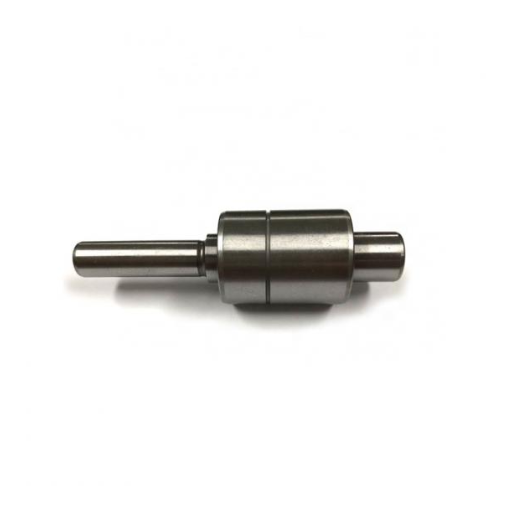
Advanced manufacturing techniques and technologies
To ensure product reliability in water pump bearings, we employ a series of advanced manufacturing techniques and stringent quality control protocols. Key processes include precision machining to achieve tight tolerances, heat treatment for enhanced material strength, and surface finishing to reduce friction and wear. These steps are critical in delivering bearings that can withstand the operational stresses of high-performance water pumps.
- Material Strength: The strength of steel alloys coupled with precise hardening treatment improves their durability, e.g. 58-62 HRC.
- Dimensional Accuracy: Construction features a tolerance of ±0.001 mm, perfecting them for assembly systems.
- Load Capacity: Application-specific static load ratings C0 and dynamic load ratings C ensure adequate performance.
- Rotational Speeds: Balancing techniques employed during manufacturing ensure high-speed operation with lower vibration and noise.
- Corrosion Resistance: Bearings are constructed with corrosion-resistant materials to sustain wet or humid conditions.
By utilizing these technologies and rigorously testing against performance benchmarks under simulated conditions, we guarantee reliable and long-lasting products that meet industry standards.
Rigorous testing and quality assurance processes
Our rigorous testing and quality assurance processes are designed to ensure that every product meets or exceeds industry standards for performance, durability, and reliability. This involves a series of controlled evaluations, including:
- Load Testing: This tests the capacity of bearings through both dynamic and static loads. Radial load capacity is determined by ISO 76, while dynamic load capacities adhere to ISO 281.
- Temperature Resistance: We conduct thermal performance tests within -20°C and 120°C – the output range and depend on both the material and lubricant used.
- Vibration Analysis: With RMS values typically below 1 mm/s, vibration patterns are tested using FFT (Fast Fourier Transform) analysis to confirm the controlling thresholds.
- Dimensional Accuracy Testing: Measurements are tested against the IS0 492 or ABEC classifications to ensure the tight constraints and perfect fit for use defined in the specifications.
- Corrosion Resistance Testing: We execute salt spray tests over 48-72 hours on materials to check for resistance to oxidation and moisture.
- Lubricant Efficiency Assessment: We check the lubrication quality against varying loads and speeds to confirm compliance with viscosity and thermal degradation.
These processes are conducted in specialized facilities equipped with advanced instrumentation, ensuring consistency and repeatability. Each test outcome is documented and reviewed to justify compliance with both customer-specific and broader engineering standards.
Compliance with industry standards and specifications
We ensure compliance with industry standards and specifications through rigorous testing and validation protocols. Our processes adhere to internationally recognized standards, including but not limited to ISO 21469 for lubricant cleanliness and ASTM D445 for kinematic viscosity measurements.
- Viscosity Index: Ascertained to determine the stability of materials surface per ASTM D2270 thermal guides.
- Pour Point: Determined to find the lowest temperature of workability ASTM D97 standard.
- Flash Point: Measured to obtain safety ignition margins thermally ASTM D92 specifications.
- Wear Scar Diameter: Determined by ASTM D4172 for wear protective properties assessment on boundary lubrication conditions.
These are selected based on their relevance to performance, safety, and durability requirements.
What innovations are leading water pump bearing manufacturers introducing?
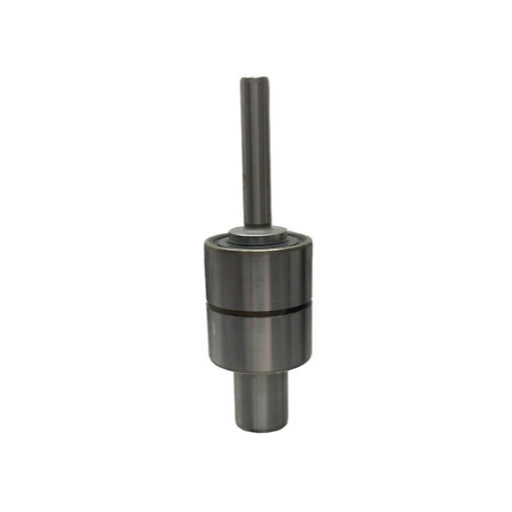
Improved sealing technologies for enhanced protection
Water pump bearing manufacturers are employing advanced sealing technologies to ensure superior protection against contaminants and fluid ingress, which are critical to extending the service life of bearings. These innovations include the use of high-performance double-lip seals and labyrinth seals, designed to resist thermal degradation and maintain effectiveness under high-temperature conditions commonly encountered in automotive and industrial applications.
- Seal Material Composition: Advanced elastomers or fluoropolymers with high thermal resistance (up to 150°C to 200°C), ensure their durability at raised temperatures.
- Ingress Protection Rating (IP): High levels of dust and water resistance with a minimum rating of IP67.
- Rotational Speed Compatibility: Seals have been tested for optimized operational conditions at speed ranges up to 7,000 RPM, which is suitable for hthe igh-speed operational demands of water pumps.
- Durability: The operational life of these seals is verified by continuous testing cycles of not less than 1,000 hours under dynamic conditions.
By adopting these enhanced sealing solutions, manufacturers are addressing stringent industry requirements for reliability and reducing the likelihood of premature failures due to contamination or fluid leakage. This increases overall efficiency and operational dependability in demanding environments.
High-performance materials for extended bearing life
The incorporation of high-performance materials in bearing design significantly enhances their functionality and longevity. Materials such as through-hardened steel, case-hardened steel, and advanced polymer composites are commonly employed due to their exceptional wear resistance, load-carrying capacity, and fatigue strength. Specifically:
- Through-hardened steel: Enables the material to have high surface loads and extended service life damage tolerance.
- Case-hardened steel: Provides a tough inner core and a hardened surface, which is an excellent combination for withstanding dynamic loads.
- Advanced polymer composites: These are highly preferred for applications that require externals to be lightweight and self-lubricating, which helps in reducing maintenance costs.
Through the use of these materials, the bearings can reliably work under unfavorable conditions such as high temperatures, exposure to dirt, or shifting loads. However, the selection of these materials is very important as poor quality materials put the bearing at risk of abnormal wear, deformation, and other operational failures, which reduces the life and efficiency of the system.
Smart bearings with integrated sensors for condition monitoring
The concept of smart bearings with integrated sensors has taken condition monitoring to another level as it allows real-time data acquisition and analysis. Such devices come with sensors that record parameters such as vibration, temperature, pressure, and speeds which provide the context of the operational condition of the bearing. Using technologies like IoT (Internet of Things) connectivity, data captured by the bearing is sent directly to a monitoring station for analysis. These intelligent tools enable maintenance activities to shift from a reactive approach to a predictive one, which ultimately results in reducing the amount of downtimes that were not anticipated.
- Vibration monitoring: captures changes in vibration signature to indicate misalignments, imbalance, or wear. In most cases, 10 mV/g to 100 mV/g is the typical range of vibration sensitivity.
- Temperature sensors: monitor operating temperatures to ensure cooling is adequate to avert overheating and thermal deformation. the target temperature should be upper 120 degrees Celsius and although traditional bearings’ temperate threshold varies on lubrication and material, it should not exceed 120 degrees Celsius.
- Rotational speed: measure RPM (Revolutions Per Minute) and identify abnormalities in performance. Most sensors are capable of measuring speeds up to 100,000 RPM for high-speed applications.
- Load/Pressure sensing: measures how the load is spread to ensure that stress is within the operational tolerance of the bearing. Pressure limits tend to exceed 50 MPa for standard systems and 300 MPa for heavy-duty systems.
The integration of these intelligent features increases the trustworthiness of systems, as well as extending the working life of the bearings through maintenance based on actual data. In particular, these systems are used in the manufacturing, automotive, and energy industries where operations must remain uninterrupted while maximizing productivity.
How to maintain and extend the life of water pump bearings?
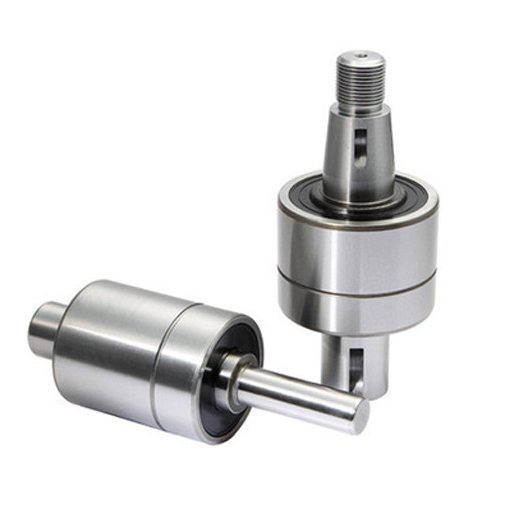
Proper installation and alignment techniques
Correct installation and adjustment of water pump bearings greatly help in extending their life and improving their functionality. First of all, use precise tools to correctly set the alignment of the shaft of the pump to that of the motor, such as laser alignment systems or dial indicators. If the machine is not properly aligned, it can create an imbalance for the bearings which leads to improper loading and maximum bearing life deterioration.
During the installation of the bearings, the shaft must be free of any dirt and particles as these can damage the rolling elements and the raceways of the bearing. Using tools like hya draulic press or specific mounting gadgets, the correct mounting force should be applied to prevent structural damage. The operational efficiency of the bearing is compromised when excessive force is used.
Follow manufacturer-recommended tolerances and preload specifications, if applicable. For instance, radial internal clearance must adhere to standards like ISO 5753-1 to prevent excessive friction or looseness. Proper lubrication is also essential, and the choice of lubricant should match the system’s operating conditions, such as temperature, speed, and load. For example, bearings operating at high speeds (>10,000 RPM) may require low-viscosity synthetic lubricants to reduce friction, while heavy-duty systems might demand grease with high load-carrying additives.
Finally, conduct a post-installation check to verify alignment and ensure there are no unusual vibrations or noise during operation. Proper monitoring tools such as vibration analyzers or thermographic cameras can help identify early signs of misalignment or installation errors, allowing for adjustments to be made before damage occurs.
Lubrication best practices for optimal performance
I would place much emphasis on a proper lubricant selection concerning system and environmental factors such as temperature, speed, load, and others to ensure optimal performance. For instance:
- Temperature Range: Check the lubricating properties of the lubricant and ensure they are maintained within the temperature operating range of the system. Synthetic lubricants with high thermal stability are recommended for high-temperature applications (above 200C). Low-pour point oils are advisable for low-temperature environments.
- Speed: Low-viscosity lubricants which reduce heat generation and friction are preferable for systems of precision bearings with speeds above 10,000 RPM.
- Load: Heavy-duty applications involving high loads or shock loading are best served by lubricants fortified with extreme pressure (EP) additives which protect contact surfaces from excessive wear.
- Environmental Factors: If contamination risks exist, consider sealed lubrication systems with water-resistant or dust-tolerant greases to protect components effectively.
Additionally, routine lubricant analysis and reapplication schedules are critical for maintaining consistency in performance. Monitoring factors such as viscosity index, oxidation stability, and contamination levels ensures that lubrication remains effective throughout the operational lifecycle. Proper documentation of these factors aids in aligning maintenance practices with the system’s technical requirements.
Regular inspection and preventive maintenance tips
For proper function and long life of mechanical systems, I follow a set procedure of inspection and maintenance work regularly.
- Visual Inspections: I constantly look for physical changes, corrosion, and deformation of important components, and I check seals, bearings, and moving parts that face exposure for possible damage. Indicators such as strange noises, visible degradation in the material, and discoloration are warnings that should not be ignored.
- Lubrication Checks: I keep an eye on the conditions of lubrication to ensure that the lubricant that is used is of the appropriate type and amount and the viscosity is as required. For instance, I use lubricating oil that has a viscosity grade compatible with the operational temperature ranges, for example, ISO VG 68 for moderate temperatures. Regularly checking for contamination with water, oxidation, and particulates is imperative.
- Alignment and Balancing: Laser alignment systems and dial indicators are used to check the alignment of rotors, shafts, and other rotating parts. The values of tolerances in the manufacturer’s specifications which need to be met range in this case from less than 0.05 mm of misalignment tolerance. Balancing tests are done to ensure that vibration levels are within ISO 10816 limits.
- Torque and Fastening Inspections: Calibrated torque wrenches are used with calibration norms adhered to to ensure proper torque of bolts and fasteners, as specified in the equipment manual.
- Temperature and Vibration Monitoring: Both parameters are tracked using sensors. For example, bearing temperatures should not exceed recommended limits. Vibration levels are analyzed using RMS velocity values, ensuring readings comply with ISO vibration standards.
Each of these tasks is scheduled systematically to align with both manufacturer guidelines and operational demands. By documenting inspection outcomes and addressing issues proactively, I maintain systems at peak efficiency while minimizing the risk of sudden failures.
Frequently Asked Questions (FAQs)
Q: What are integral shaft bearings and how do they relate to water pump bearings?
A: Integral shaft bearings are specifically designed components that combine the bearing and shaft into a single unit. In water pump applications, these bearings are crucial for automotive and industrial systems. They typically feature a double-row ball bearing design with an inner ring that’s integrated with the shaft, providing compact and efficient performance.
Q: What are the advantages of using double-row ball bearings in water pumps?
A: Double-row ball bearings provide several advantages in water pump applications. They offer increased load-carrying capacity due to two rows of rolling elements, enabling higher specific load-carrying capability. This design also allows for more compact arrangements, saving space while maintaining excellent performance and durability in automotive and industrial settings.
Q: How do spherical bearings differ from standard double-row bearings in water pump applications?
A: Spherical bearings have a unique design that allows for some misalignment, which can be beneficial in certain water pump applications. Unlike standard double-row bearings, spherical bearings have a curved outer ring that can accommodate slight angular movements. This feature can help compensate for minor shaft deflections or mounting inaccuracies in automotive and industrial systems.
Q: What factors should be considered when selecting premium water pump bearings?
A: When selecting premium water pump bearings, consider factors such as load capacity, speed requirements, operating temperature, sealing effectiveness, and overall system design. The bearing’s width and outer ring dimensions are also important, as they affect the pump’s compactness. Additionally, consider the specific application requirements, whether it’s for automotive use or industrial purposes, to ensure optimal performance and longevity.
Q: How do integral shaft bearings contribute to the efficiency of water pump systems?
A: Integral shaft bearings contribute to water pump efficiency by combining the bearing and shaft into a single element. This design reduces the number of components, minimizes assembly time, and often results in a more compact and lightweight pump. The integrated design also helps to maintain proper alignment between the bearing and shaft, which can lead to reduced friction, improved performance, and extended service life in both automotive and industrial applications.
Q: What are some common delivery and availability considerations when ordering water pump bearings?
A: When ordering water pump bearings, consider factors such as lead times, stock availability, and shipping options. Many manufacturers offer expedited delivery services for urgent requests. It’s also important to check if the desired bearings are part of the standard inventory or if they require custom manufacturing, which may affect delivery times.
Q: How do single bearings compare to double-row bearings in water pump applications?
A: Single bearings are generally simpler and may be suitable for lighter-duty water pump applications. However, double-row bearings, such as double-row ball bearings, offer superior load-carrying capacity and stability. The additional space for rolling elements in double-row bearings enables higher specific load-carrying capability, making them ideal for more demanding automotive and industrial water pump systems where reliability and performance are critical.

